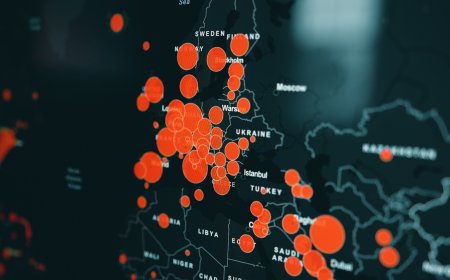Exploring Autoethnography: A Comprehensive Guide
Delve into the world of autoethnography, a unique research methodology that combines personal experience with cultural analysis. This comprehensive guide provides researchers with an overview of the history, key concepts, and applications of autoethnography to enrich their work and create impactful narratives.

Autoethnography is a compelling research methodology that blurs the lines between personal experience and cultural analysis, inviting researchers to explore the complex interplay between the self and society. By combining elements of autobiography and ethnography, autoethnography offers researchers a powerful tool for generating rich, evocative narratives that illuminate the human experience and foster empathy and understanding. In this comprehensive guide, we will delve into the history, key concepts, and applications of autoethnography, empowering researchers to harness the potential of this transformative approach in their work.
What is Autoethnography?
Autoethnography is a qualitative research methodology that combines elements of autobiography and ethnography to explore the relationship between personal experience and cultural context. In an autoethnographic study, the researcher draws upon their own experiences, feelings, and reflections as a primary source of data, using these self-narratives to illuminate broader cultural patterns and processes. By foregrounding the subjective, autoethnography challenges conventional research norms, inviting researchers to embrace their own perspectives and emotions as integral to the research process.
Key Concepts in Autoethnography
-
Reflexivity: A central tenet of autoethnography is reflexivity, the practice of critically examining one's own positionality, biases, and assumptions in relation to the research process and its outcomes.
-
Storytelling: Autoethnography relies heavily on storytelling as a means of conveying personal experience and situating it within broader cultural narratives.
-
Emotionality: Autoethnographic research embraces the emotional dimensions of human experience, recognizing that emotions play a crucial role in shaping our understanding of ourselves and the world around us.
-
Cultural Analysis: While autoethnography foregrounds the personal, it also emphasizes the importance of contextualizing individual experiences within broader cultural, social, and historical frameworks.
The Origins of Autoethnography
The roots of autoethnography can be traced back to various intellectual and cultural movements that emerged in the mid-20th century, including the feminist movement, the civil rights movement, and the postmodern turn in the social sciences. Influenced by the work of thinkers such as Clifford Geertz, Michel Foucault, and Carolyn Ellis, autoethnography emerged as a response to the perceived limitations of traditional research methodologies, offering a more personal, intimate, and interpretive approach to the study of culture and society.
Approaches to Autoethnography
There are several different approaches to autoethnography, reflecting the diversity of perspectives and practices within the field. Some of the most prominent approaches include:
-
Evocative Autoethnography: This approach emphasizes the emotional and aesthetic aspects of autoethnographic writing, seeking to engage readers by creating vivid, evocative narratives that convey the richness and complexity of personal experience.
-
Analytic Autoethnography: Analytic autoethnography focuses on the systematic analysis of personal experience, using one's own experiences as a starting point for exploring broader cultural phenomena and generating theoretical insights.
-
Critical Autoethnography: This approach foregrounds issues of power, oppression, and social justice, using autoethnographic narratives as a means of interrogating and challenging dominant cultural discourses and practices.
Applications of Autoethnography in Research
Autoethnography has been applied in a wide range of research contexts to explore diverse topics and issues. Some key areas of application include:
-
Identity and Belonging: Autoethnographic research has been used to investigate the complex dynamics of identity construction and negotiation, with a focus on issues such as race, ethnicity, gender, sexuality, and social class.
-
Health and Illness: Researchers have employed autoethnography to examine the lived experiences of individuals with various health conditions, shedding light on the interplay between personal experience and medical discourse.
-
Education: Autoethnography has been used to explore various educational issues, such asteacher-student relationships, the experiences of marginalized students, and pedagogical innovations in the classroom.
-
Work and Organizational Studies: Autoethnographic research has been employed to investigate the dynamics of workplace culture, leadership, and professional identity.
-
Migration and Transnationalism: Researchers have used autoethnography to examine the experiences of migrants and diasporic communities, exploring themes such as cultural adaptation, transnational belonging, and intergenerational relationships.
In conclusion, autoethnography offers a powerful and evocative research methodology for researchers seeking to navigate the intersection of personal experience and cultural analysis. By embracing the subjective, emotional, and interpretive dimensions of human experience, autoethnography enables researchers to create impactful narratives that illuminate the complexity of the self and society. As researchers continue to explore and refine this approach, autoethnography promises to remain an essential tool for deepening our understanding of the human experience and fostering empathy and connection in an increasingly complex and diverse world.
Disclaimer: The image(s) featured in this article are for illustrative purposes only and may not directly depict the specific concepts, situations, or individuals discussed in the content. Their purpose is to enhance the reader's understanding and visual experience. Please do not interpret the images as literal representations of the topics addressed.
What's Your Reaction?













































































































